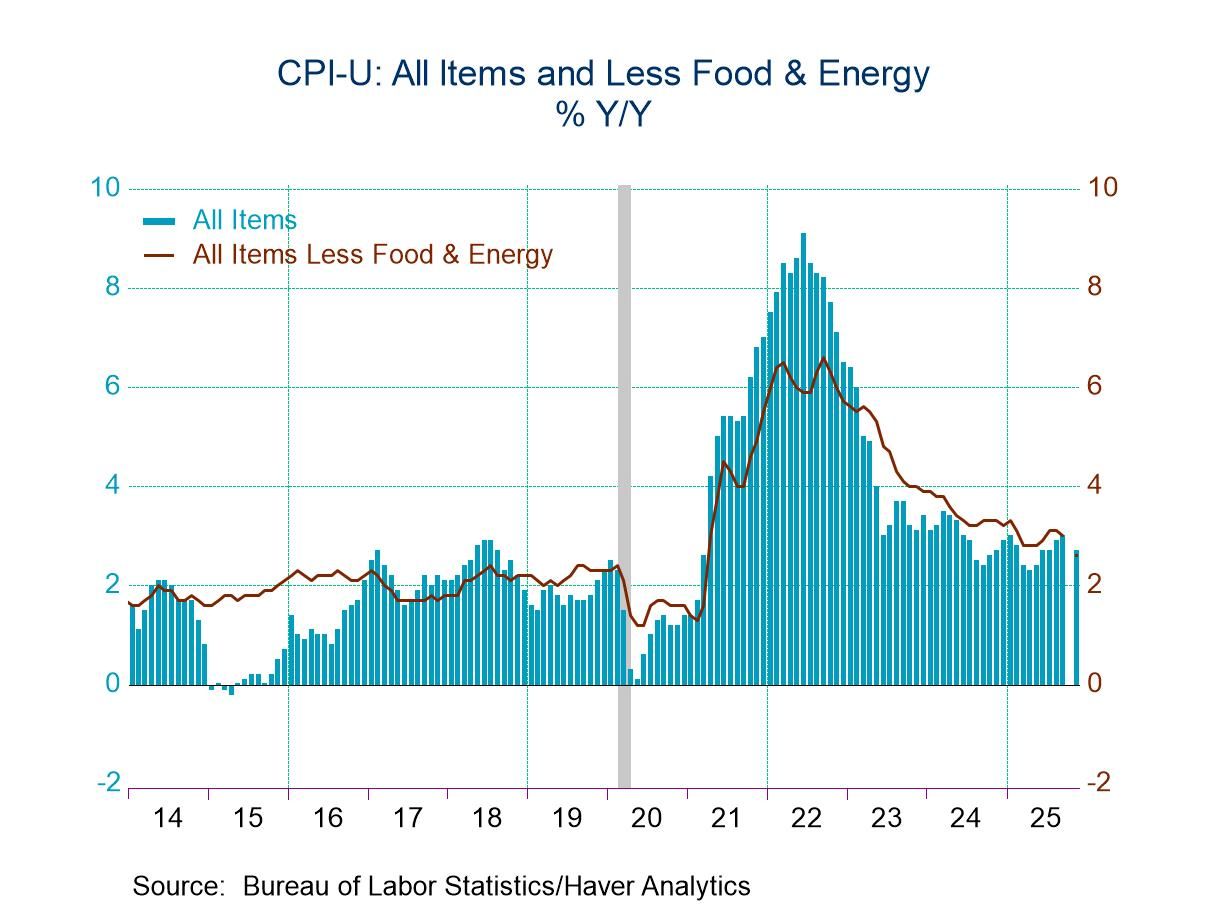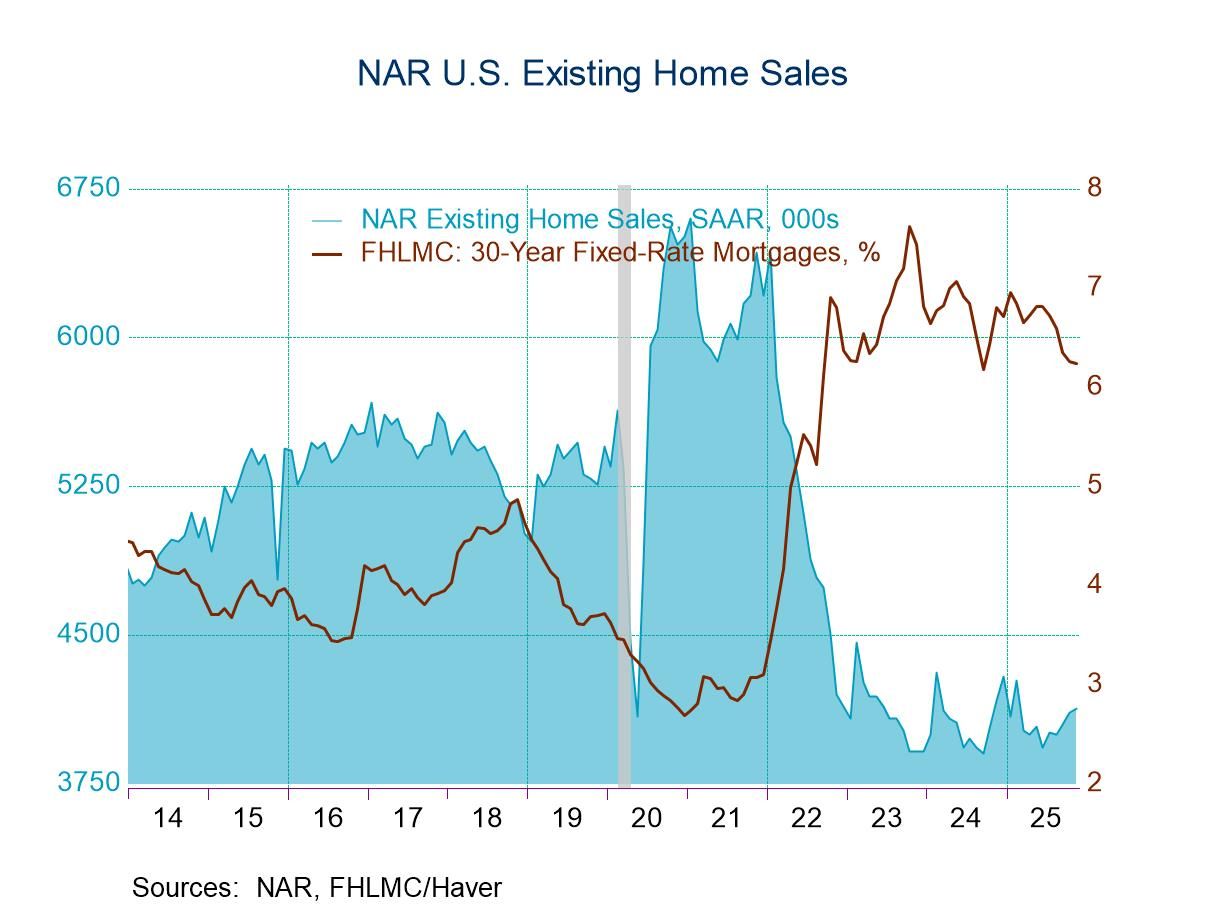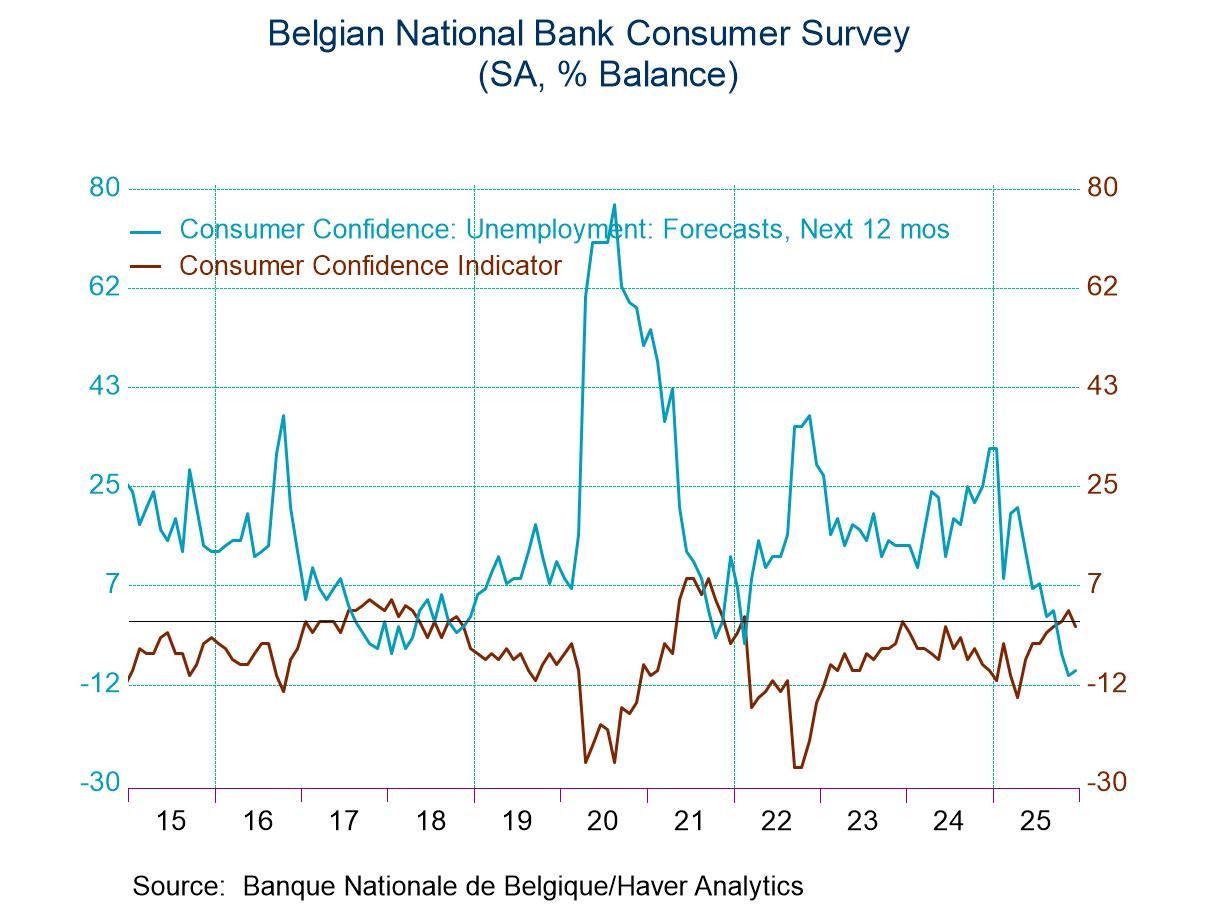 Global| Nov 01 2023
Global| Nov 01 2023Global Manufacturing PMIs Remain Weak and Basically Trendless

The Standard and Poor’s measures for manufacturing unemployment globally show somewhat mixed results tilted to weakness I went in October as 7 of 18 improved month-to-month while 11 of 18 worsened. The median observation for October fell by 0.6 diffusion points to 48.7, a value that indicates manufacturing contraction overall among this broad sample of reporting units.
Sequential trends Sequential trends show 8 of 18 reporters with improved manufacturing PMIs comparing average levels over three months to six months ago. Comparing average levels of six months to 12 months ago, ten of them are improved out of 18. The six-month mark shows that there has been a broad improvement compared to 12 months ago; however, over 12 months compared to the period of 12 months earlier, there is broad weakening; only five reporters show stronger values over 12 months than over 12 months ago.
Rankings Ranking data that assess the current October levels of the PMI among all data since January 2019 show that the average standing among that queue of values for these reporters is at the 26th percentile; that’s right at the bottom 25% of all observations for the period. This marks the current manufacturing set of estimates as quite weak. Mexico and Russia show percentile standings around the top ten percentile of data over this period. Only 4 reporting units show PMI values that are above their medians which means above the ranking of 50%; one country, South Korea, is right at its 50% mark. The two countries that are above their medians are above them moderately: India with the 59.6 percentile standing and Indonesia with a 57.7 percentile standing.
Compare to pre-Covid Compared to data back to January 2020, only four reporters show stronger values for manufacturing PMIs: Russia (if you believe it), Mexico, Indonesia, and India. South Korea sits at the same mark it had in January 2020.
On balance… On balance, manufacturing remains quite weak globally with little sense of momentum. The median for the PMI values from 12-months to 6-months to 3-months has crept higher but very little, moving from 48.5 to 48.6 to 49.1. These metrics compare to an October stand-alone median reading at its 48.7 percentile – weaker again.

Robert Brusca
AuthorMore in Author Profile »Robert A. Brusca is Chief Economist of Fact and Opinion Economics, a consulting firm he founded in Manhattan. He has been an economist on Wall Street for over 25 years. He has visited central banking and large institutional clients in over 30 countries in his career as an economist. Mr. Brusca was a Divisional Research Chief at the Federal Reserve Bank of NY (Chief of the International Financial markets Division), a Fed Watcher at Irving Trust and Chief Economist at Nikko Securities International. He is widely quoted and appears in various media. Mr. Brusca holds an MA and Ph.D. in economics from Michigan State University and a BA in Economics from the University of Michigan. His research pursues his strong interests in non aligned policy economics as well as international economics. FAO Economics’ research targets investors to assist them in making better investment decisions in stocks, bonds and in a variety of international assets. The company does not manage money and has no conflicts in giving economic advice.






